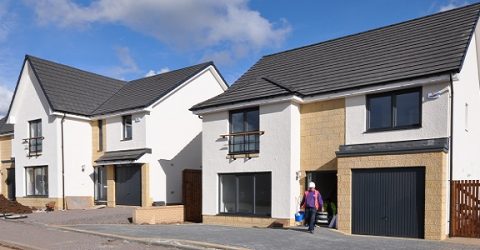How quickly is full fibre broadband really being rolled out across the UK?
Fewer than one in six UK households benefits from full-fibre broadband, even though it's a staple in most new homes.

It might come as a surprise to learn that broadband connections encompass a huge variety of speeds.
Standard broadband downloads content at up to 24Mbps, usually relying on ADSL connections across a phone line.
Superfast broadband is categorised as any connection whose performance ranges from 24Mbps to 300Mbps.
And then there’s ultrafast broadband – speeds over 300Mbps, which are becoming increasingly common in urban areas across the UK.
guideWhat is broadband bandwidth anyway?
Ultrafast services are always distributed across full-fibre broadband connections, which also tend to handle the faster end of the superfast spectrum.
But what is full fibre? And how quickly is it being rolled out?
A high fibre diet
The term ‘full fibre broadband’ is used where the fibre optic cables distributing data around the world extend directly into a private home.
It’s known within the telecommunications sector as Fibre to the Premises (FTTP), or Fibre to the Home (FTTH).
It’s far superior to Fibre to the Cabinet (FTTC) connections, which terminate at green or grey pavement utility boxes before phone lines transfer data into individual properties.
FTTC connection speeds are hobbled by this inefficient last leg of data’s journey, whereas FTTP can support connections of up to 1Gbps.
This, you might recall, is the standard Boris Johnson promised every domestic internet connection would meet by 2025.
NewsA third of UK households suffer poor connectivity during lockdown
However, that was always an impossible ask given the UK’s uneven population distribution, and the challenges of cabling sparsely populated rural regions.
Indeed, the latest research suggests less than one in six UK homes can currently receive FTTP.
Fully covered?
At the beginning of September, it was calculated that 16 per cent of UK households were able to obtain full fibre broadband services.
Leading the way by some distance was the City of Kingston upon Hull, where over 99 per cent of properties have full fibre services on offer.
We recently explained why Hull has a unique telecommunications infrastructure, benefitting from the usual monopoly holder economies of scale.
The forward-thinking town of Milton Keynes was second in the list of local authorities with high levels of full fibre, with over three quarters of properties meeting this standard.
Belfast almost matched the 75 per cent ratio, and York and Salford made the UK’s top five with around 60 per cent of homes able to receive FTTP.
While a slight majority of homes in Northern Ireland have access to full fibre, no districts of Scotland, Wales or south-west England have achieved majority coverage to date.
MoreIs UK broadband fit for remote working?
Despite ongoing investment by firms like Openreach, Gigaclear and Hyperoptic, the UK’s patchwork quilt of ADSL, FTTC and FTTP connectivity will take many years to standardise.
In the meantime, most people will have to wait patiently for superfast broadband connections to be installed outside their homes, let alone ultrafast connectivity.






